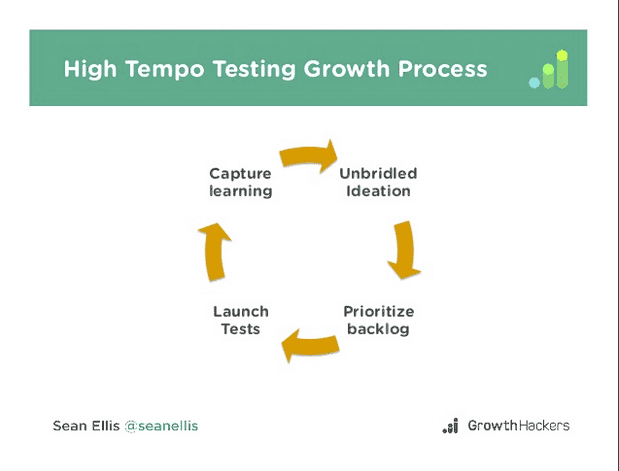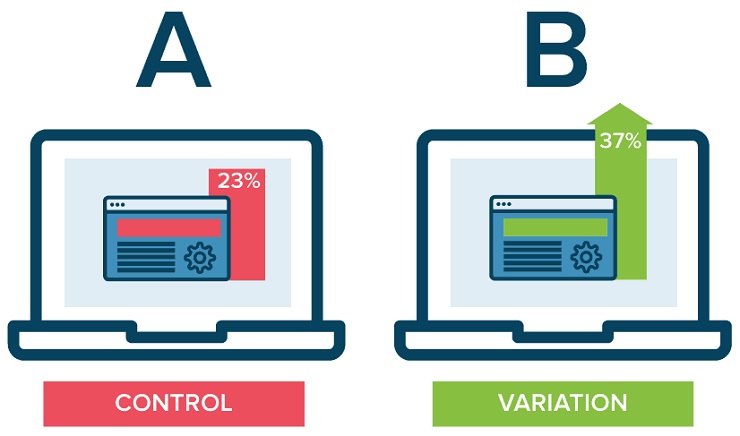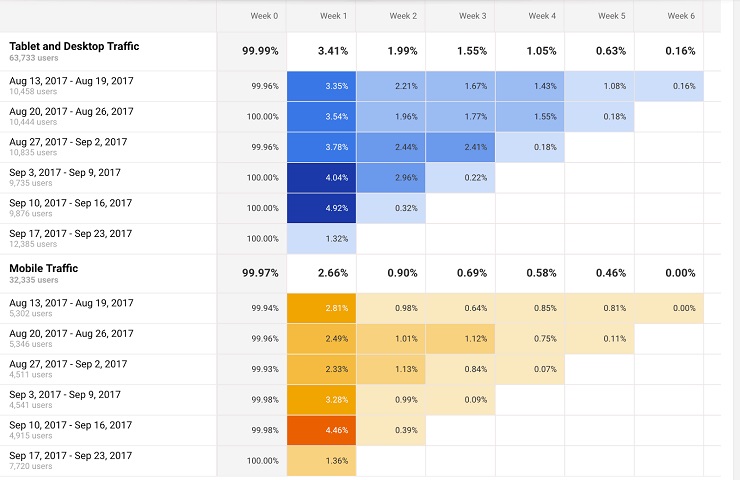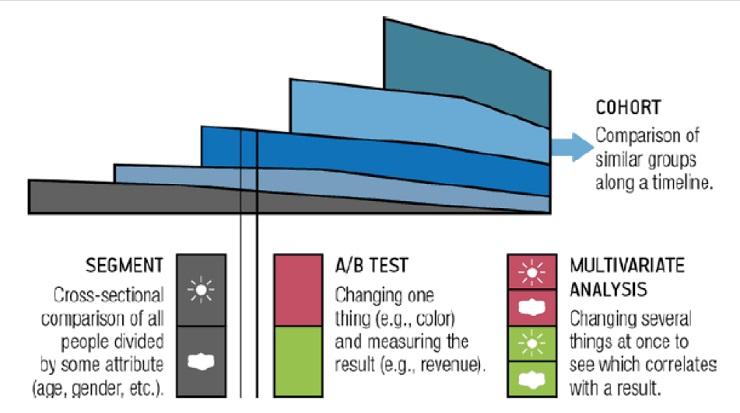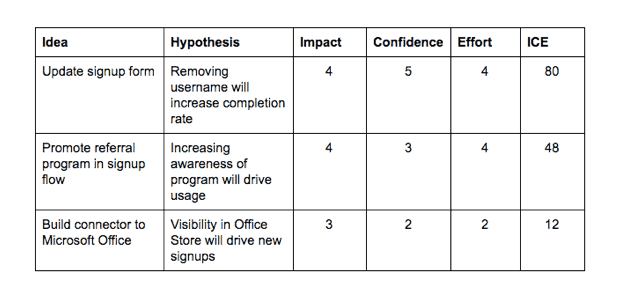In the past five years, a new approach to business growth has changed the way marketers do their jobs.
Back in the day, it was direct-response marketing; then came online marketing, guerrilla marketing, and viral marketing. Today, the hot marketing buzzword is “growth hacking.”
Everyone seems to be talking about it—tech startups, ecommerce stores, and even government institutions. The reason for its popularity is simple: it works.
Growth hacking has pushed thousands of small tech companies and lean startups to achieve scale and profitability in just a few years, becoming titans in their markets. Companies like Airwallex have even reached unicorn status (worth over $1 billion in market capitalization) in similar timeframes, thanks to the power of growth hacking.
But with all the fanfare around the term, you may be wondering: How can I use growth hacking for my own company? Is it only useful for tech startups located in Silicon Valley, with access to millions in VC funding?
Yes, you can implement a growth hacking strategy in your own company if you follow the right process; and no, you don’t need big investors or flashy Embarcadero offices to do so.
If you’re interested in learning more about growth hacking, then keep on reading, because today you will learn exactly what it is and how you can develop a growth hacking strategy for your own business.
EXCLUSIVE FREE TRAINING: Successful Founders Teach You How to Start and Grow an Online Business
What’s Growth Hacking?
Unlike other popular terms from the past, growth hacking wasn’t born out of the mind of a business “intellectual” like Michael Porter or Jay Conrad Levinson. It was born from the musings of an experienced and renowned tech entrepreneur called Sean Ellis.
In the now-classic article that started the growth hacking movement, Ellis said: “a growth hacker is a person whose true north is growth.”
From this simple definition, we can conclude that growth hacking is the process that focuses on growing a company at all costs.
More recently, Ellis explained in the book Hacking Growth: How Today’s Fastest-Growing Companies Drive Breakout Success that growth hacking is: “A team effort; the greatest successes come from combining programming know-how with expertise in data analytics and strong marketing experience.”
Growth hacking is much more than marketing on steroids; it’s a process that mixes marketing (online marketing, for the most part) with programming, analytics, design, user experience, and even consumer psychology.
In Growth Hacker Marketing: A Primer on the Future of PR, Marketing, and Advertising, Ryan Holiday explains:
Whereas marketing was once brand based, with growth hacking it becomes metric and ROI driven. Suddenly, finding customers and getting attention for your product becomes no longer a guessing game. Growth hackers trace their roots back to programmers—and that’s how they see themselves. They are data scientists meets design fiends meets marketers.
Growth hacking is a data-driven, analytical, yet highly pragmatic way of thinking about marketing and growth. The ultimate goal behind any growth hacking strategy is to bring in more users—to achieve “scale,” as growth hackers call it.
But behind this goal, there’s a strategy that must be understood first.
What’s a Growth Hacking Strategy?
A growth hacking strategy represents a model that simplifies all the marketing tactics—the growth hacks— you’ll implement. In his book, Ellis explains:
The growth hacking process provides a specific set of activities that growth teams should undertake to find new, and amplify existing, growth opportunities through rapid experimentation to find the top performers.
The process is a continuous cycle comprising four key steps: (1) data analysis and insight gathering; (2) idea generation; (3) experiment prioritization; and (4) running the experiments, and then circles back to the analyze step to review results and decide the next steps.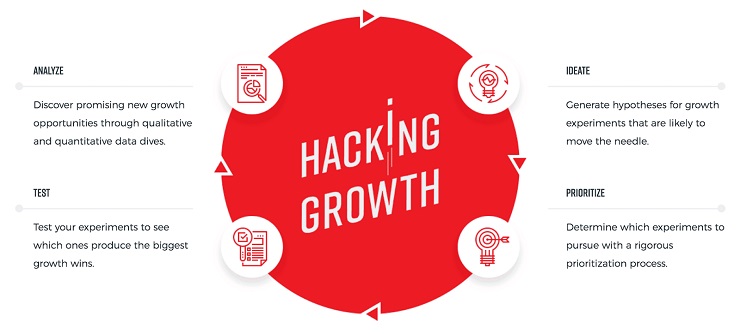
In order to implement a growth hacking strategy, then, we need to split this process into each of the four steps Ellis mentioned.
How to Create a Growth Hacking Strategy
Step 1: Gather the Data
Traditionally, marketers start their strategy sessions by making a list of all the ideas they’d like to implement. Growth hackers, the analytical beings they are, know better.
So in the first step, the strategy starts by gathering all the data needed to inform the tactics.
It’s a growth hacker’s job to dive into the data available, gathered from all the users acquired, until they can understand their different customer segments and ideal customer.
On the one hand, you must understand the characteristics of your best customers. That includes:
- The features they use
- How often they open the app
- The items they buy the most
- Their average order size
- The time of day and days they shop
- The acquisition sources (e.g., Google Adwords, SEO, referral, etc.)
- The devices they use
- Their demographic background (age, income, and more)
- Their location
On the other hand, you must also understand the behaviors of customers who “churn,” that is, stop using the product or decide against buying.
You want to know:
- The pages that have the highest exit rates
- The bugs that prevent people from taking a particular action (share with a friend, make a purchase, etc.)
- The actions they don’t they take that your best customers do
The analysis must be both qualitative and quantitative. You need to have both “a feeling” of your best customers as well as hard data that can justify your ideas.
Regarding your qualitative analysis, you need to carry out interviews and surveys to get to know both your best customers along with those who have churned, and understand the reasons behind their behaviors.
But you also need to crunch numbers, and even find correlations and develop statistical models to get a clear understanding of your users’ behaviors.
The data you gather, however, shouldn’t be static. You don’t look at the data and make changes directly to your site and hope they work. You carry out dozens of experiments in a process known as “high-tempo testing.”
You come up with ideas, you test them, and those that win are implemented in the site and those that don’t are discarded and used in future experiments.
All this means is that the majority of your data will be derived from experiments. If you haven’t done any testing yet because you’re just getting started, then you can take your data at hand and use it to develop ideas. Eventually, however, the data should come from your past and current tests.
Allistair Croll and Benjamin Yoskovitz, authors of the book Lean Analytics: Use Data to Build a Better Startup Faster, explain there are three key ways to gather your data for your experiments:
- Segmentation
- A/B tests and multivariate analysis
- Cohort analysis
A segment is simply a group that shares some common characteristics. It might be users who come from the same country, region, or city; people who buy a certain product three times a month; chief officers from tech companies with more than 500 employees.
You carry out segmentation according to a range of technical and demographic information, then compare one segment to another.
For example, if you see visitors from New York make fewer purchases, you can do further testing to find out why that happens. Or you may find that a lot of customers with high average order values come from Miami, and test to find out why that’s the case and how you can replicate that in other cities.
With A/B testing, you compare two pages with one different attribute, like the size of a product page’s button, and leave the other elements equal. The variation that wins (in this case, that gets the most clicks on the tested button or most purchases), gets used throughout the site.
Instead of running different tests one after the other, you can analyze them all at once using a technique called “multivariate analysis.” This relies on statistical analysis of the results to see which of many factors correlates strongly with an improvement in a key metric.
Cohort analysis works similarly to segmentation, but instead of comparing it to groups statically, it compares them over time.
With cohort analysis, you can find the highest-performing (or lowest-performing) cohorts and see the factors that drive the performance.
For example, in the first month of your analysis, you may have a signup process with three steps—sign up, payment, confirmation. Within that first cohort, you end up seeing a sign up rate (that is, the people who went through the three-step process) of 2%.
In the second month, you take the second page and avoid payment until later. This is a big change for your business, both in the assumptions behind the payment as well as the consequences it can have on consumer behavior.
After this change, let’s say your second-month cohort sees a signup rate of 5%. You can see that the change in your sign up process more than doubled your sign up rate.
Source: Lean Analytics
These three analytical methodologies will help you gather all the data you need to come up with new experiments that can help you reach scale and high-pace growth.
Data Gathering Tools
If you have a website, an online store, or an app, data is everywhere. Pretty much any interaction can be easily tracked and later analyzed.
The data you gather will come from your analytics tools, which can include:
- Site analytics: Google Analytics, Mixpanel, etc.
- Store analytics: Shopify and all the major platforms have basic analytics ingrained
- Customer analytics: Woopra
- A/B testing tools: Optimizely, VWO
- User analytics: Hotjar, Crazyegg
- Survey tools: LiveChat, Qualaroo
- Email marketing tools: Aweber, Drip
EXCLUSIVE FREE TRAINING: Successful Founders Teach You How to Start and Grow an Online Business
Step 2: Generate Ideas
The data you gathered in the previous step is the beginning of the growth hacking process, as it allows you to understand what’s working in your site and what isn’t.
Growth hackers then use further experimentation to improve the latter and maximize the effectiveness of the former so they can achieve scalable growth.
In order to develop such experiments, you need to come up with ideas—lots of them. In other words, you need to cook up some growth hacks.
Ultimately, you should engage as many people from as many different parts of your company as possible to gather testing ideas. The larger the diversity of the people involved—think customer support and sales reps, engineers, marketers, and so on—the better the ideas you’ll find.
More importantly, these ideas should be related to the data you’re starting with. For example, if you have found that you have a high churn with people who sign up after clicking on a Facebook ad, the ideas generated must be focused on this specific segment.
The ideas generated must be submitted to a standardized idea pipeline so they can be easily evaluated without having to go through a lot of digging to remember their meaning.
For example, a vague suggestion would be, “our sign-up process is too difficult; it should be simple to follow.” A much better idea would articulate the exact change to be tested, the idea behind the change, how it might improve results, and a brief explanation of the way results should be measured.
Ellis recommends you write down each idea with the following elements:
- Idea name: It should be brief, clear, and if possible, self-explanatory.
- Idea description: It should look like an executive summary; it should address the who (the target audience), what, where, when, why, and how of the idea.
- Hypothesis: The hypothesis should explain the expected cause and effect of the test.
- Metrics to be measured: It should define the metrics to be tracked in order to evaluate the outcome of the test.
At the end of this step, you want to have at least a few dozen ideas that you can easily start testing.
Step 3: Prioritize Experiments
The ideas you generated in the previous step will look exciting; you’ll want to start testing them right away. But if you did it right, you will have way too many ideas to run at the same time. You may end up testing ideas that have no real impact on your bottom line and thus waste resources on a test that’s best left for a later stage.
In this step, then, you must prioritize your ideas so you can run the most important ones first. Growth hackers have developed several prioritization frameworks, including the PIE and ICE frameworks. Ellis likes to use the latter, so we’ll recommend that one here.
After someone submits an idea, the submitter should rate each idea on a 10-point scale, according to the following three criteria (which gives the ICE framework its name):
- The idea’s potential impact—the expected degree to which the ideas will improve the metric being focused on
- The submitter’s level of confidence in how effective it will be
- The ease of implementation—the time and resources needed to run the experiment
After the submitter defines the number for each idea submitted, those ratings will be averaged to provide an aggregate score for each idea.
Because the level of confidence is the most subjective parameter of the three, the rating given should be based not just on a “hunch,” but on empirical evidence.
Whether that evidence is gathered in step 1 or it comes from industry benchmarks, published case studies, or knowledge of previous experiments, the submitter must be able to coherently explain the rationale behind the rating.
At the end of this step, you will know exactly what tests to run and how much they should affect the metrics related to them.
The more tests your run, the better idea you will have of the impact they can have, as well as the confidence you should assign them, and the resources needed to implement them.
Step 4: Run the Experiments
The last step is the one most growth hackers like to discuss—the actual execution of the tests. It’s time to hack.
Growth hackers should ideally be able to execute these experiments themselves. As Andrew Chen, one of the first people to talk about the concept of growth hacking, says, “Growth hackers are a hybrid of marketer and coder.”
But in reality, growth hackers may need the help from other people on the team, including designers, developers, and anyone else who can help them run the experiment in the shortest amount of time possible. That means executives should give growth hackers maximum leeway.
When running tests, Ellis recommends two rules of the road:
- Use a 99% statistical confidence level: This percentage level of confidence greatly reduces the risk of choosing a winning experiment on the basis of a false-positive result.
- Control wins in a tie: When results are inconclusive—when you’re not sure whether a test won or not—stick to the original (the control) version
After you’ve achieved statistical significance with the confidence needed to call a test off, you should keep the winning tests and discard the ones that lose against the control.
The experimentation post-mortem should seek to analyze the results so the growth hackers understand what users want, like, and need.
Most importantly, the insights gained from each test should then be used as the fuel for your next batch of tests and for the decisions you make company wide.
Growth hacking fosters a constant process of learning that keeps the whole company on its toes, absorbing new ideas to grow ever faster, and gaining a depth of user knowledge that can allow it to become the most important player in its industry.
EXCLUSIVE FREE TRAINING: Successful Founders Teach You How to Start and Grow an Online Business
Now Hack Away, Future Growth Hackers!
Growth hacking has transformed the marketing and tech world because it has mixed the analytical, disciplined mindset of scientists and engineers with the creativity of marketers and designers.
It has allowed companies to learn from their users and grow from the bottom-up. It has made companies leaner, more efficient, and more effective.
If used correctly, the growth hacking strategy showed here can become the secret winning formula for your own company’s growth. It can become the spark of life of your startup.
Are you ready to create a growth hacking strategy for your tech business? Let us know if you have any questions or suggestions in the comments!

